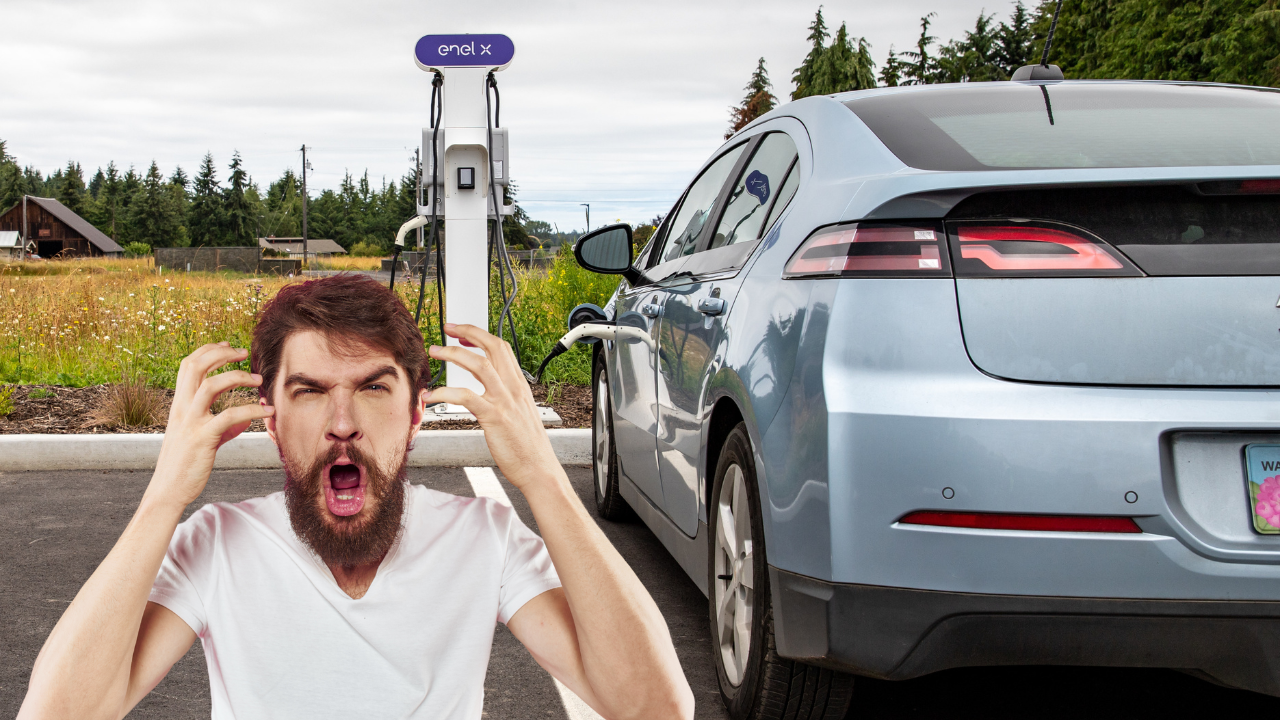5 Biggest Nightmares Of Driving An EV In India
The transition to electric mobility has accelerated in India, with the government's push towards sustainable transportation. However, electric cars' adoption has not gained momentum as expected. It is because EV owners face five significant hurdles, including high initial costs, limited model options, insufficient charging infrastructure, battery performance concerns, long charging times, and lack of after-sales support. Addressing these issues requires government incentives, subsidies, and more affordable EV models, in addition to a collaborative effort from the government, manufacturers, and infrastructure providers.

Updated Jun 10, 2023 | 01:33 PM IST

5 Biggest Nightmares Of Driving An EV In India
India's transition to electric mobility has gained significant momentum in recent years. With the government's push towards sustainable transportation and the growing environmental consciousness among citizens, electric vehicles (EVs) have garnered attention as a cleaner and greener alternative to traditional petrol and diesel-powered cars. It is well known that the EV transition in India has gained significant momentum in the two-wheeler and commercial vehicle segment and manufacturers would like to replicate the same in the passenger car segment as well.
While manufacturers are trying their best to introduce new and updated electric passenger cars, their adoption hasn’t really kicked off like expected, and there are many reasons that are still holding back the EV transition of the passenger cars segment. Times Drive readers today we look into the biggest challenges faced by EV owners in India. These inhibiting factors pose a major challenge to EV owners and potential EV buyers in the passenger car segment in India. For this specific reason we have penned down the five biggest hurdles that EV owners face in India.

High Initial Cost and Limited Model Options
Acquiring an EV in India often comes with a higher price tag compared to conventional vehicles. The initial cost of purchasing an electric car is still relatively high due to factors such as expensive battery technology and limited production scale. Additionally, the availability of electric car models in the Indian market is limited, offering consumers fewer choices compared to traditional petrol and diesel options. Overcoming these challenges requires government incentives, subsidies, and the introduction of more affordable EV models. For example the regular petrol version of the Tata Nexon has a starting ex-showroom price of Rs 7.79 lakh whereas its electric version has a starting ex-showroom price of Rs 14.49 lakh. To get its EV model it requires nearly twice the initial investment.

Lack of Sufficient Charging Infrastructure
One of the most significant concerns for EV owners in India is the scarcity of charging infrastructure. While the number of charging stations has increased over the years, it is still insufficient, particularly in non-metro cities and remote areas. This lack of infrastructure poses a significant challenge for EV owners, as they often struggle to find convenient and accessible charging points, leading to range anxiety and limited travel options.

Battery Performance and Range Anxiety
The performance and range of EV batteries continue to be a significant concern for Indian EV owners. High temperatures and varying climatic conditions in different parts of the country affect the battery's efficiency and overall performance. Moreover, the limited range of some EV models adds to the problem of range anxiety, making long trips or intercity travel a daunting task. Enhancements in battery technology, increased range, and robust thermal management systems are essential to alleviate this nightmare.

Long Charging Time
Another nightmare of driving an EV in India is the time it takes to charge the vehicle. Unlike refueling a traditional car that takes a few minutes, recharging an EV can be a time-consuming process. Even with fast-charging stations, a significant amount of time is required to replenish the battery, causing inconvenience during long journeys or when in a hurry. The need for faster charging technology and the availability of high-power charging stations are critical to address this issue.

High Ambient Temperature And EV Fires
India is a tropical country with most places experiencing hot and humid temperatures for major parts of the year. The ambient temperature in India is higher than most regions of the world hence during times when the temperatures are higher than usual EVs have gone up in flames in recent years. This has also driven many potential EV customers away from purchasing an electric vehicle in the country. We have even come across EV customers who choose not to operate their vehicles when the ambient temperature is higher than usual. In many northern parts of India the temperature crosses 45 degrees celsius during summers. High temperatures accompanied with dust and blazing hot winds presents less than an ideal condition for any battery operated vehicle.

Also: Maintenance and After-Sales Support
Maintaining an EV in India can be a nightmare for owners due to limited after-sales support and expertise. Service centers equipped with specialized EV technicians and spare parts are still relatively rare. This scarcity makes it challenging to find prompt and reliable service for EVs, leading to longer wait times and inconvenience for owners requiring repairs or maintenance. Building a robust service network and training mechanics in EV technology is vital to ensure a hassle-free ownership experience.
The transition to electric mobility in India is gaining momentum in the passenger car segment but it is crucial to acknowledge the challenges that EV owners face on a day-to-day basis. The limited charging infrastructure, long charging times, battery performance concerns, high initial costs, and lack of after-sales support are the nightmares that need to be addressed for a smoother and more widespread adoption of electric vehicles in India. These issues require a collaborative effort from the government, manufacturers, and infrastructure providers to create an ecosystem that supports and encourages EV ownership. Only then can India truly achieve its vision of a greener and more sustainable future on its roads.
End of Article
Videos





02:08
What Are Key Differentiating Points In Poonawalla Fin Corp ? | Explains MD Abhay Bhutada

03:23
Breaking News | BJP MP Accuses Leaders Of 'Adjustment' With Congress In Karnataka, Sparks Infighting

03:38
Manipur Violence Erupts Again As Kukis, Meiteis Refuse Peace Talks| 9 Killed In Flare-Up

03:03
How MD of Poonawalla Fincorp Abhay Bhutada Started His Career ? | Business News

03:56
TMC Workers Clash In West Bengal Ahead Of Upcoming Panchayat Polls | Election News













